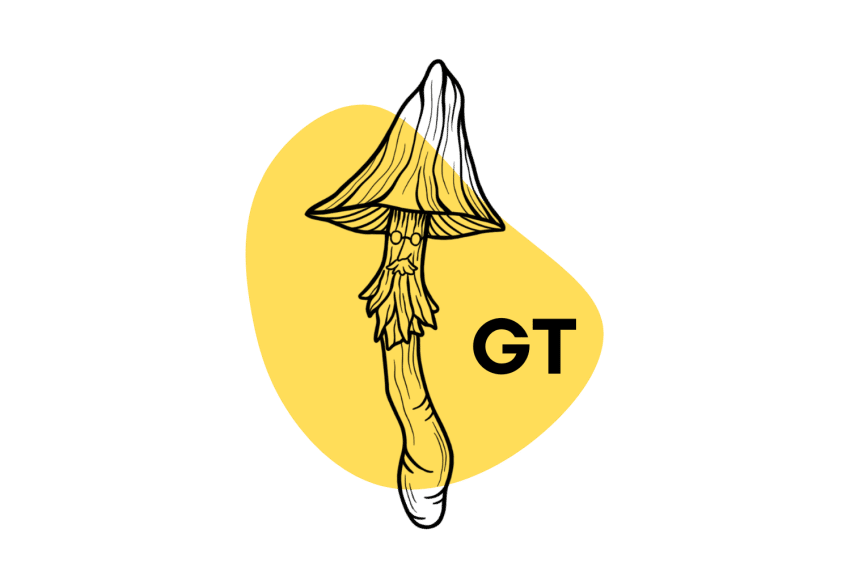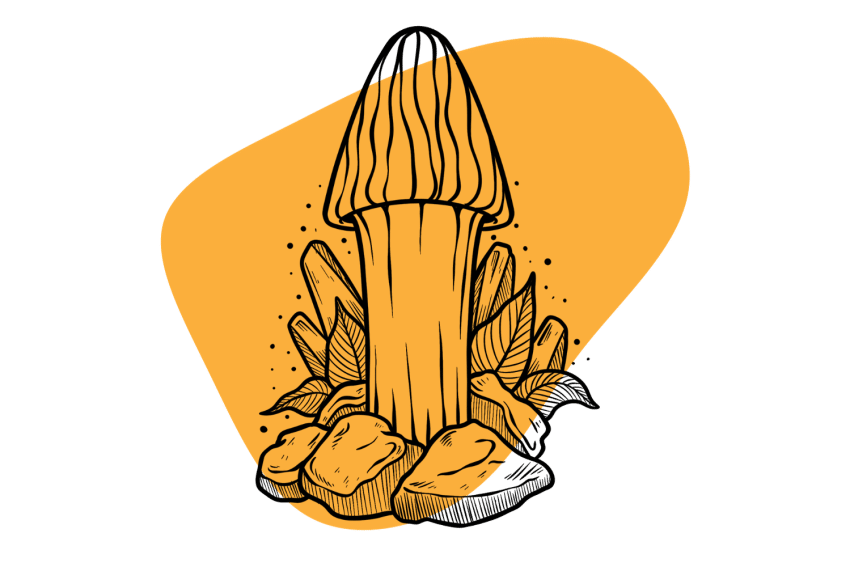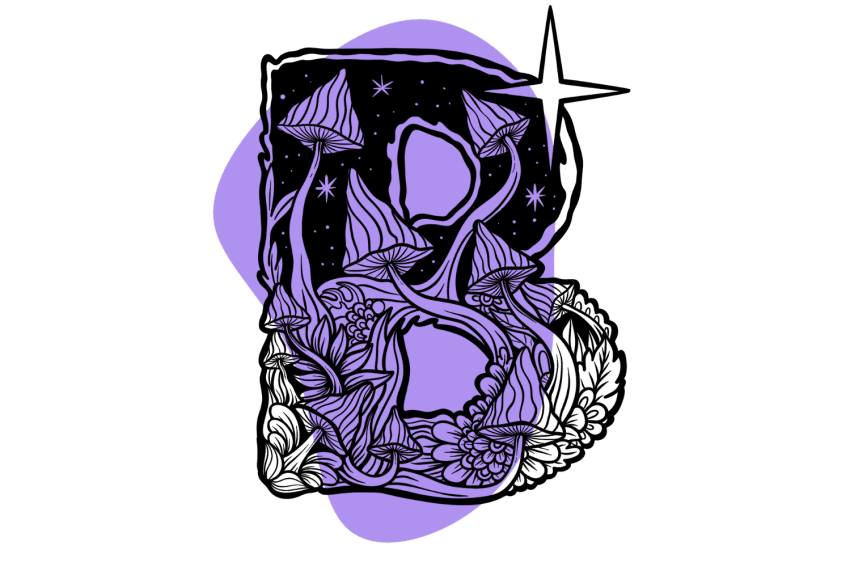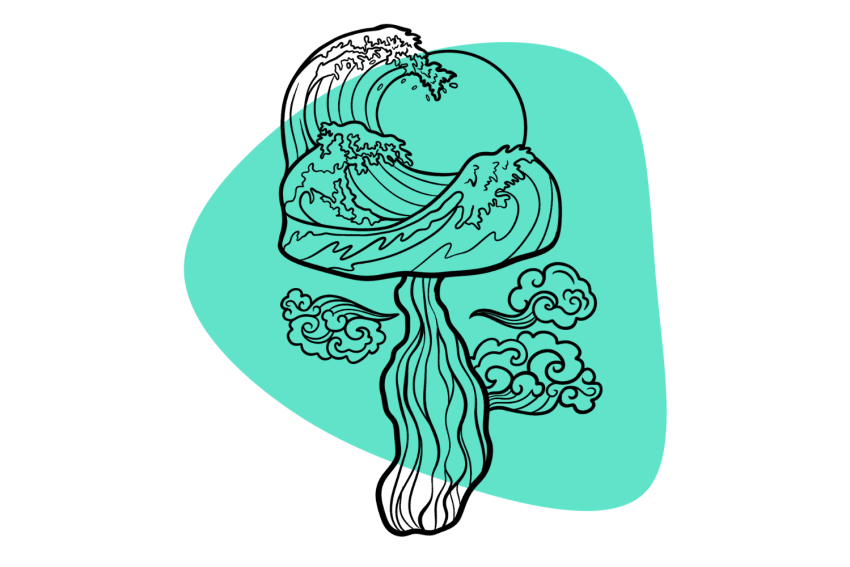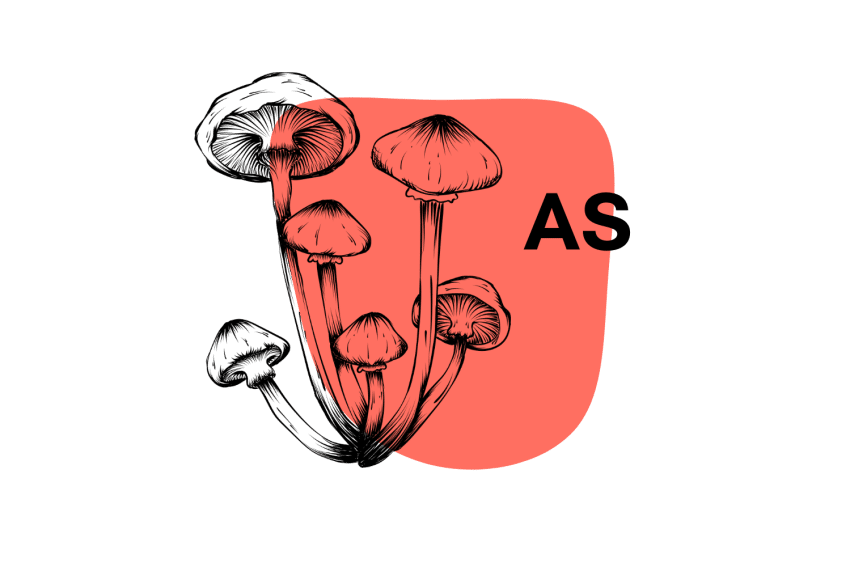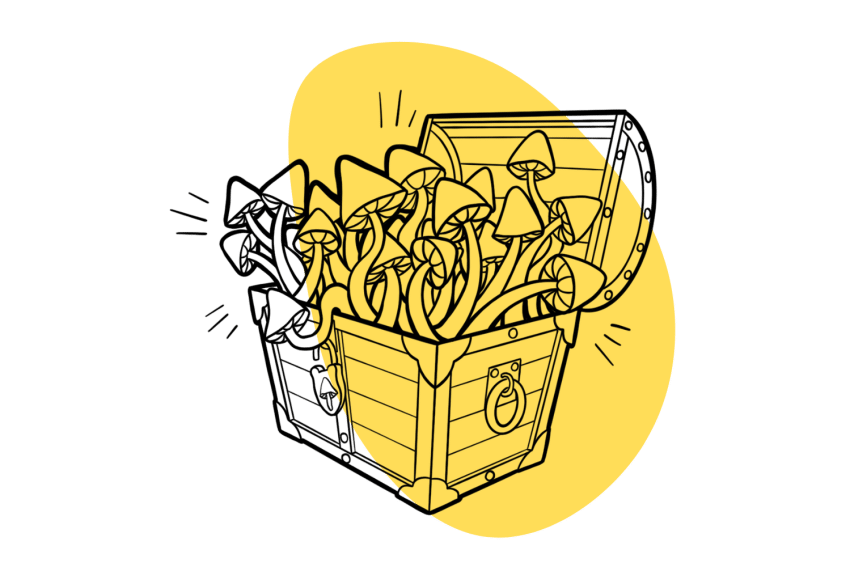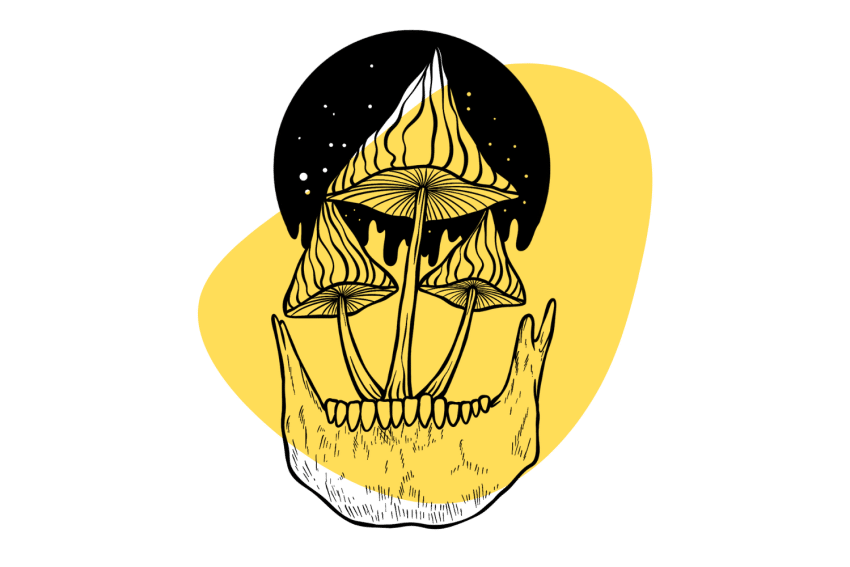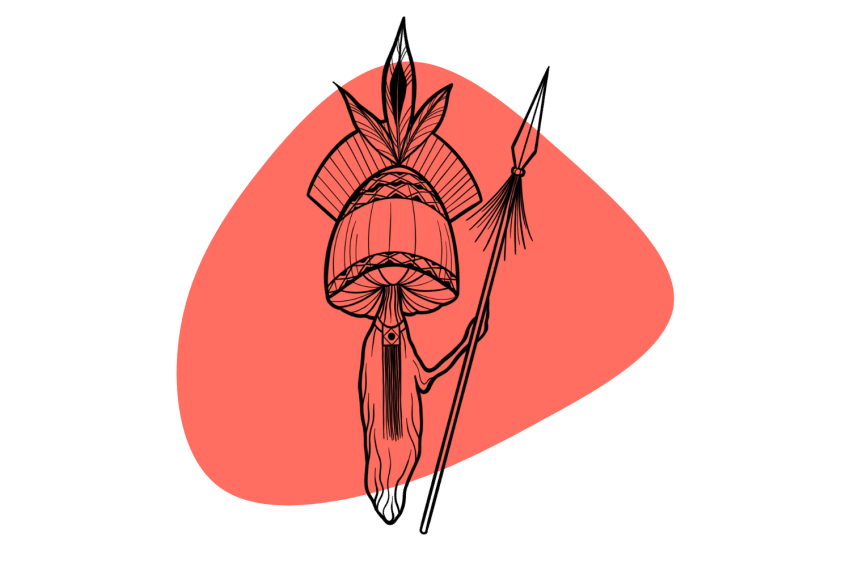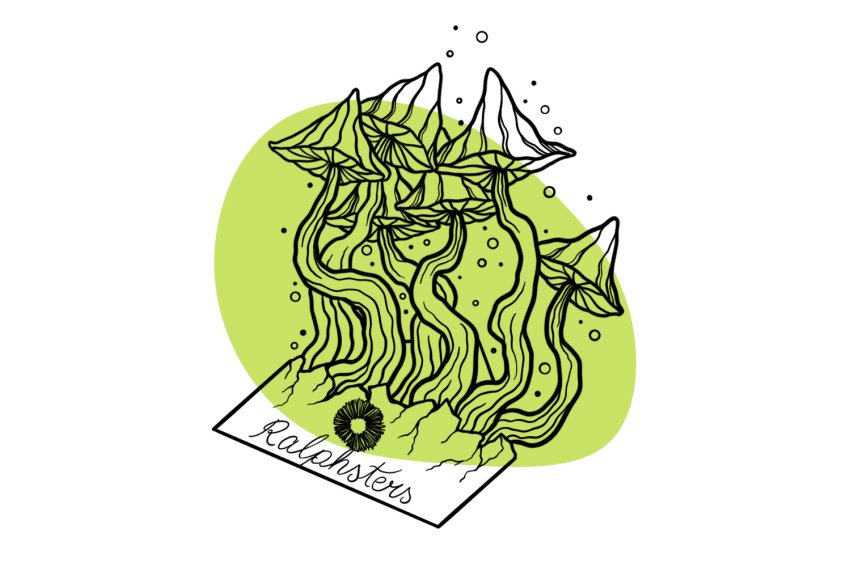Psilocybe azurescens 101: The “Flying Saucer” Shrooms
Introducing the world’s most potent species of psilocybin-containing mushrooms — Psilocybe azurescens.
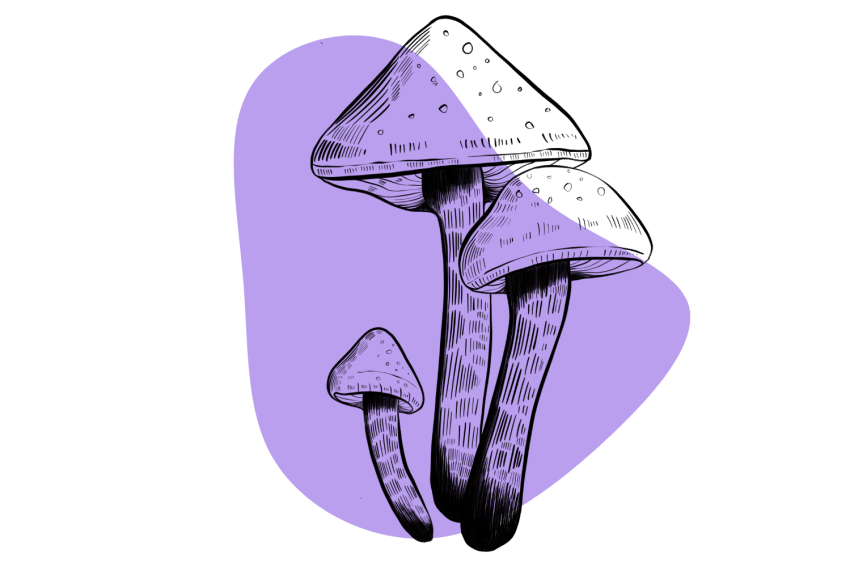
Psilocybe azurescens, also known as the Flying Saucer Mushroom or the Blue Angel, is a small but powerfully psychedelic mushroom.
The most well-known species of psychedelic mushroom is, of course, Psilocybe cubensis. Several strains exist, most of which are relatively easy to cultivate. Psilocybe azurescens is less popular among mushroom cultivators because optimal indoor conditions are hard to maintain, and yields are poor.
Although it’s much more challenging to grow, Psilocybe azurescens are undeniably more potent than your typical P.cubensis strain.
In this article, we’ll look at this potent shroom in-depth — including its history and origins, where it grows, what it looks like, and how potent it is.
What Are Psilocybe azurescens Mushrooms?
Psilocybe azurescens grows naturally in a small area of North America and thrives in coastal environments — the mushrooms can be found growing amongst sand dunes within clumps of grass and on rotting wood.
This species looks extremely similar to Psilocybe cyanescens and Psilocybe allenii. The mushrooms have a caramel-colored cap with a wide saucer-like shape with a distinct nipple on top, hence its name “Flying Saucer.”
This is a highly potent mushroom species that can produce strong psychedelic effects with intense waves of energy and euphoria and prominent closed and open-eye visuals. This definitely isn’t for the beginner and should be treated with great respect.
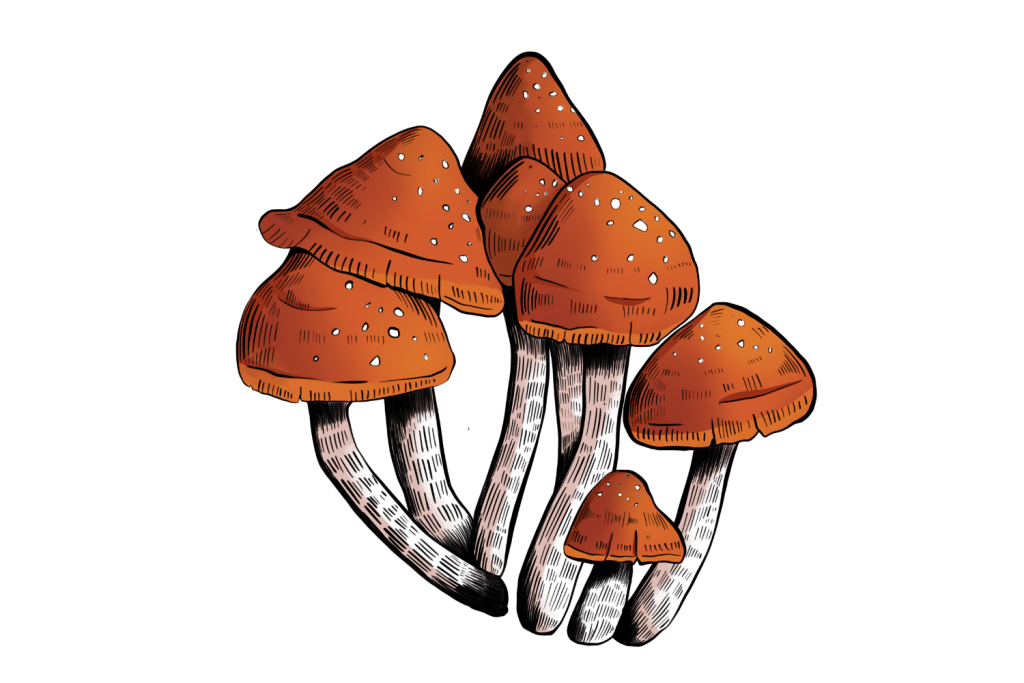
Indoor cultivation of Psilocybe azurescens can be challenging. In the wild, these shrooms have a unique habitat and require a highly-optimized growing environment to flourish.
Most people choose to use outdoor cultivation methods to produce Psilocybe azurescens mushrooms because of the problems associated with indoor cultivation.
This species has a relatively limited history, but we do know when and where it was originally discovered. Let’s take a peek into the history and origins of this super-potent psilocybin species.
The History & Origins of Psilocybe azurescens
The known history of Psilocybe azurescens is pretty limited. Unlike other species, such as Psilocybe mexicana, which have been used for thousands of years, we can only date back P. azurescens to its discovery in 1979.
Supposedly, a group of Boy Scouts that were camping close to the Columbia River Delta in Oregon discovered this shroom in ‘79. It’s reported that some of the Boy Scouts consumed the mushrooms and experienced their potent psychedelic effects. However, there is very little information left, if there ever was, to back this story up.
They were likely discovered earlier than this by local foragers but probably considered poisonous and inedible until much later on. P. azurescens could have gone under the radar because they were referred to as Psilocybe cyanescens var. “Astoria Ossip” and/or Psilocybe astoriensis.
What we know is that this species’ potent effects were brought to light in 1995 when mycologists Paul Stamets and Jochen Gartz reviewed its qualities. Among other factors, they discovered that the psilocybin levels of this species were extremely high. They also had the privilege of naming the species.
Stamets and Gartz named Psilocybe azurescens after Paul Stamets’ son Azureus. The son of this passionate mycologist was aptly named after the word “Azure” — the color that psilocybin-containing mushrooms take on when bruised.
Where Does Psilocybe azurescens Grow?
Psilocybe azurescens grows in an incredibly small area in North America and grows naturally in California, Washington, Oregon, and British Columbia, but not many other places.
The small natural distribution of this Psilocybe species is definitely intriguing, and it has led to some speculation as to whether it’s native to these lands. Paul Stamets suggested that P.azurescens could have “migrated” downstream on the Columbia River from old-growth forests further upriver.
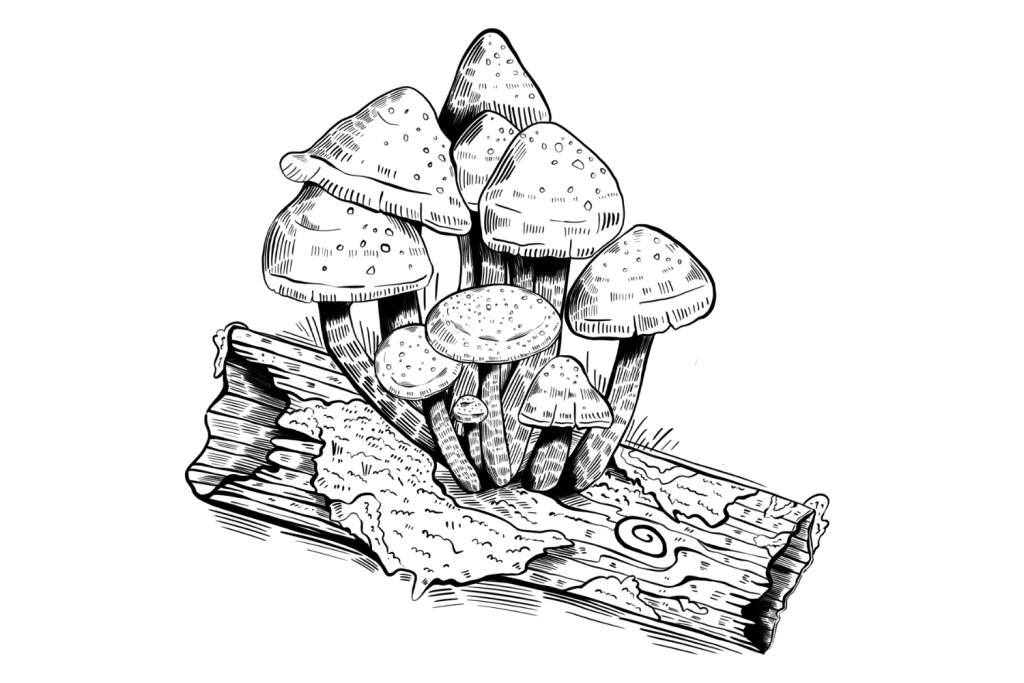
Its extremely limited natural distribution could be part of the reason it’s so difficult to cultivate in artificial growing environments. However, it seems the species is slowly spreading throughout the United States and Canada.
Some reports through online forums suggest that Psilocybe azurescens is spreading to states such as Idaho and Colorado. This could be down to the unnatural introduction of the species through outdoor cultivation.
Psilocybe azurescens Habitat
Naturally, Psilocybe azurescens favors coastal lands. They grow on coastal dunes, along the edges of coastal woodland, and within clumps of dune grass, specifically Ammophila maritima.
They also love wood and can be found on washed-up driftwood that’s settled in the dunes or inland on deciduous deadwood, as well as deciduous wood chips and debris.
Like most wood-loving fungi, this species has an extensive mycelium network that works its way through sandy soils and composted woodland debris fairly quickly. During fruiting, this expanse of mycelium can produce several dense clusters of mushrooms spread over a large area.
Psilocybe azurescens mushrooms grow later in the season than other psilocybin mushroom species and can withstand temperatures as low as 25℉ (-4℃).
Depending on the location of the colony, fruiting can begin as early as September and finish as late as January.
Related: Where Do Shrooms Grow? How to Find Magic Mushrooms In the Wild
How to Identify Psilocybe azurescens
Psilocybe azurescens is relatively easy to identify. This species is also called Blue Angel because the stem produces a powerful blue coloration when bruised. This is great for those that want to ID it — of course, you can’t rely on this factor alone.
Psilocybe azurescens has a caramel-colored cap that turns darker brown when wet. The cap ranges from 3-10 cm in diameter and is conical when young and more convex and saucer-shaped through maturity. The mushroom will often flatten out completely when it begins to sporulate.
A distinct nipple can be seen at the top of the cap regardless of how young or mature the fruiting body is. The cap has a shine to it and is smooth and almost sticky to the touch, especially when wet. When split carefully, you’ll see a viscous gelatinous pellicle (essentially a layer of clear slime).
The edges of the caps have thinner flesh — you can see a line through the flesh at the base of the cap where the gills meet. This line is darker than the rest of the cap and often blue in color.
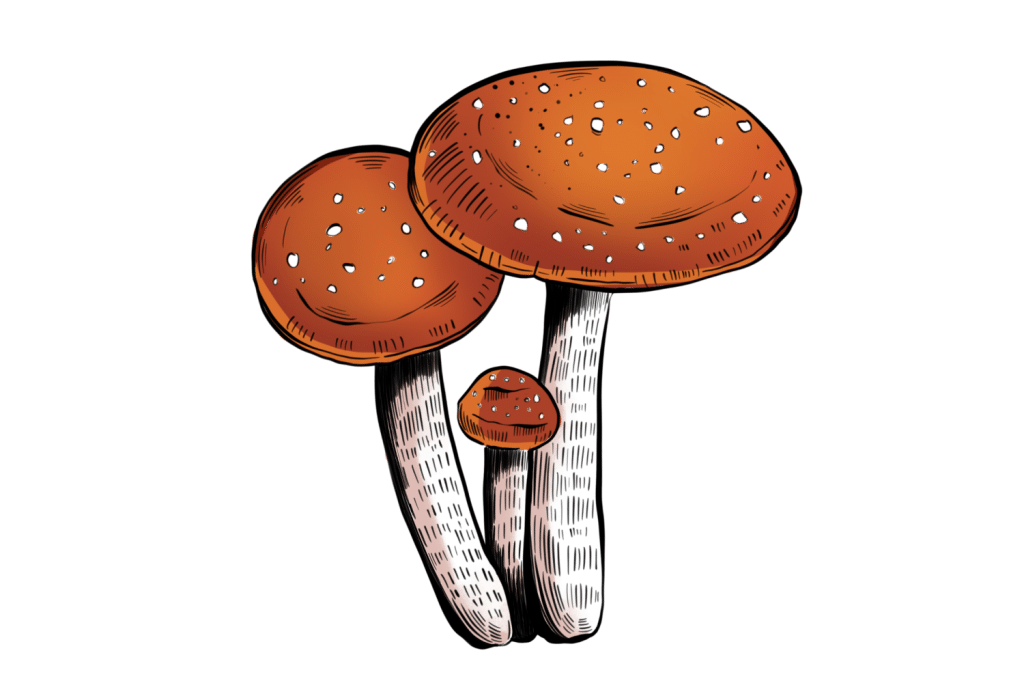
When the mushrooms are young, they have a partial veil covering the gills. This white veil is made up of thin, stringy fibers that look similar to a spider’s web. Once the cap expands as it matures, this veil falls away, rarely leaving a trace of its existence behind. The stem often has a bluish-purple streak where the veil once connected.
The stem of Psilocybe azurescens ranges from nine to 20 cm in length and 3-6 mm wide. When dry, the stem is white to creamy-yellow in color. When it’s wet or more mature, it takes on a gray or brown color. If you split the stem, you’ll find it to be fibrous and stringy.
The base of the stem, where it connects to the mycelium, is thicker, but the majority of its length is of even thickness. If you squeeze the stem lightly up its length, it should turn blue in patches within five to ten minutes.
Like most Psilocybe species, P.azurescens produces a purple-black spore print. However, this can look more brown in some cases. As long as the physical identification features match up and the spore print is black or brown with blue-purple hues, it’s likely that the mushroom in question is Psilocybe azurescens.
Remember, you should never consume any wild mushroom if you’re unsure of its identity. Purchasing a good fungi ID book and/or heading out foraging with an experienced friend is essential if you want to identify edible and hallucinogenic fungi accurately and confidently.
The Potency of Psilocybe azurescens
Psilocybe azurescens is a notoriously potent psilocybin mushroom. According to Paul Stamets’ & Johan Garts’ 1995 publication, this Psilocybe species can produce a psilocybin level of up to 1.80% with an average dry-weight psilocybin percentage of 1.10% [1].
If you’re not sure how potent 1.80% psilocybin makes this species, it’s extremely strong. To put it into perspective, the average strain has a psilocybin level of around 0.42%.
One gram of dried Psilocybe azurescens could be the same potency-wise as 3.5 grams of Psilocybe cubensis. This is a potent species that shouldn’t be taken lightly. It’s definitely one for the more experienced psychonauts out there and isn’t recommended for beginners.
The effects are said to be highly visual and spiritual, and the come-up can be incredibly intense. People that have experimented with this shroom have said that it’s on another level and can blow your mind.
What’s the Dose of Psilocybe azurescens?
Due to how potent Psilocybe azurescens is, the dosages are different from your average magic mushroom.
As little as one gram of dried shrooms can be enough to notice some considerably potent psychedelic effects. This species is around four times as strong as your average P.cubensis strain, so great care must be taken when you consume a dose. You definitely don’t want to be chowing down on 3.5 grams or more for your first trip.
If you’ve had experience with Psilocybe cubensis strains such as Golden Teacher, you should know roughly how much in dry weight you need to produce the effects wanted. With this in mind, you should roughly divide your usual cube dose by four when taking P.azurescens.
Here’s a rough guide on Psilocybe azurescens doses:
- Mild Dose: 0.5 grams or less
- Medium Dose: 0.5 – 1.0 grams
- Potent Dose: 1.0 – 2.0 grams
- Heroic Dose: 2.0 grams or more
The exact dose you need to produce the effects you desire will vary depending on your tolerance, experience, body weight, and metabolism.
With any magic mushroom, it’s important to work up your dose slowly. With Psilocybe azurescens, it’s all the more important. Remember — you can always take more, but you can’t take less.
Can You Microdose Psilocybe azurescens Mushrooms?
Due to their staggering potency, I wouldn’t recommend them for microdosing. A single mushroom can make you trip, so it’s extremely difficult to accurately divide the shrooms into sub-perceptual doses.
A microdose is around one-tenth of a psychedelic dose.
For microdosing, most people consume between 50-100 mg of dried mushrooms every 3 to 5 days. Using a potent shroom such as P.azurescens is risky business — you’re far better off using a mild to moderate strain of Psilocybe cubensis.
People often microdose psilocybin to improve mood, elevate focus, alleviate stress, or improve their creative thought processes.
If you choose to microdose psilocybin-containing mushrooms, make sure to do so in a controlled environment. Psilocybin is a psychoactive substance, and if you miscalculate your microdose, it could lead to you becoming impaired.
How Can Psilocybe azurescens be Consumed?
Psilocybe azurescens can be consumed in the same way that other psilocybin-containing mushrooms can. Of course, you’ll need to be cautious about your dosages regardless of the method.
There are several ways that you can consume shrooms. You can simply eat them fresh or dry, or you can prepare them in teas, food, or capsules.
You can make tea by simply adding chopped dried mushrooms to just-boiled water. Leave the brew for 20 minutes or so, then strain it. Magic mushroom tea produces a quicker onset of effects and a more intense come-up compared to eating raw mushrooms.
For more tips, read our detailed guide on making shroom tea.
Dried magic mushrooms can also be ground into a powder and used in various ways. Putting the powder into capsules is a great method for those that hate the taste of magic mushrooms. It’s also a good way to take Psilocybe azurescens due to the shroom’s potency. You can easily fit a single psychedelic dose inside an average-sized capsule.
The mushroom powder can also be used in cooking. There’s a wide range of edibles you can make, but it’s important to know how to use shrooms in cooking since psilocybin can deteriorate through heat.
Potential Risks Associated With Psilocybe azurescens Consumption
As with any substance, there are risks associated with Psilocybe azurescens.
The most obvious risk is taking too much. You can’t overdose on psilocybin mushrooms, but you can definitely have a bad experience. This is far easier to do with Psilocybe azurescens due to its other-worldly potency.
Taking too much psilocybin can lead to unpleasant delirium, extreme nausea, vomiting, and an all-around bad time. Be careful with this shroom when dosing. I mentioned this earlier, but don’t take this shroom’s potency lightly — it’s on another level to your average magic mushroom.
Another risk associated with Psilocybe azurescens specifically is something a little strange, a phenomenon that’s rare but well worth mentioning — “Wood Lovers Paralysis” (WLP).
WLP occasionally occurs one to three hours after the ingestion of Psilocybe mushrooms that grow on wood. There’s currently no explanation as to why this occurs, but it’s frequently talked about on psychedelic-related forums such as Shroomery.
The effects of Wood Lovers Paralysis include muscle weakness and a loss of motor control. This can last anywhere from a few hours to well into the day after. The effects of WLP shouldn’t be confused with the effects of a potent psilocybin trip. WLP can occur even at low doses.
There’s no real explanation as to why this can occur, but the most realistic and believable theory is that a compound called aeruginascin is responsible. This compound is very similar to psilocybin and may undergo a similar change to the conversion of psilocybin to psilocin.
If this is true, the aeruginascin compound would lose a methyl group and convert into a compound called bufotenidine — a compound found in toad venom that is known to cause paralysis.
Wood Lovers Paralysis doesn’t happen to everyone, and it doesn’t seem to be fatal, but it could cause worry and anxiety and has the potential to send you spiraling into a bad trip.
Related: Tripsitter Safe Tripping Guidelines
Can Psilocybe azurescens be Cultivated?
Although Psilocybe azurescens can be cultivated in an indoor growing environment, producing optimum conditions suited to growth is challenging. It’s possible to use PF-Tek (a method commonly used to produce Psilocybe cubensis shrooms), but the results can often be underwhelming. Check out our guide on growing magic mushrooms, if you’re up for the challenge.
The best way to cultivate Psilocybe azurescens is actually outdoors. This is a wood-loving shroom that thrives in wood-derived substrates such as Alder chips and wood-based mulch. Provided you don’t live in the desert, it should be easy enough to find a good area in your backyard to cultivate these mushrooms.
Find a moist patch of land that’s out of direct sunlight. A garden bed under the shade of a tree is ideal. It takes between six and eight months to cultivate this species, so it’s important that you get the area prepared around February or March.
Essentially, you need to create a small framed bed and fill it with substrate — beech chips, Alder chips, or other deciduous wood-based substrate is ideal. You can even use a cardboard box full of substrate for this method.
The substrate will need to be inoculated with spores and kept moist and dark. Covering the box or bed with a dark but breathable membrane will help regulate moisture and keep the growing mycelium out of the light. You may need to spray the substrate here and there to keep the moisture levels up.
There’s always a risk of contamination using this method, but Psilocybe azurescens is extremely resilient, and many people have produced great results with outdoor cultivation.
The whole colonization process takes up to six months. If you start the process in February or March, check the substrate in August or September. Poke a small hole in the substrate with your finger. If successful, you should see a layer of mycelium — if you don’t already see signs of it on top of the substrate.
If your substrate has colonized successfully, you can uncover the container and expose it to the sunlight. Over the following months, the fruiting bodies will begin to appear. Harvest them as they mature and leave a couple to die naturally at the end of the season.
If you look after it, the colony will last for several years and produce two to three flushes per year. If you allow a couple of mushrooms to sporulate at the end of each year, you can expect the colony to grow, producing bigger yields of naturally cultivated shrooms.
Related: Top 5 Mushroom Grow Kits
Is Psilocybe azurescens Legal?
The active psychedelic compound present in Psilocybe azurescens is psilocybin.
Psilocybin’s positive effects are coming to light as studies show its potential for use in therapy and medicine. However, this compound is still very illegal in most countries.
Aside from a select group of countries such as Jamaica, The Netherlands, and Brazil, psilocybin is a controlled substance.
Psilocybin is a controlled substance in the UK, and the majority of Europe, and the penalties for possession can be as severe as those for possessing cocaine, heroin, and amphetamine. Holland (the Netherlands) is the one exception. Here, magic mushrooms are illegal, but psilocybin truffles are decriminalized.
In Canada, psilocybin remains illegal. However, the country is at the forefront of scientific research into psilocybin and is far more relaxed in terms of penalties.
You’ll often find magic mushrooms available for sale in certain low-key dispensaries across the country. The sale of these illicit mushrooms is rarely interrupted by the law, and it’s expected that the sale, possession, and consumption of psilocybin-containing mushrooms will soon be legal in Canada.
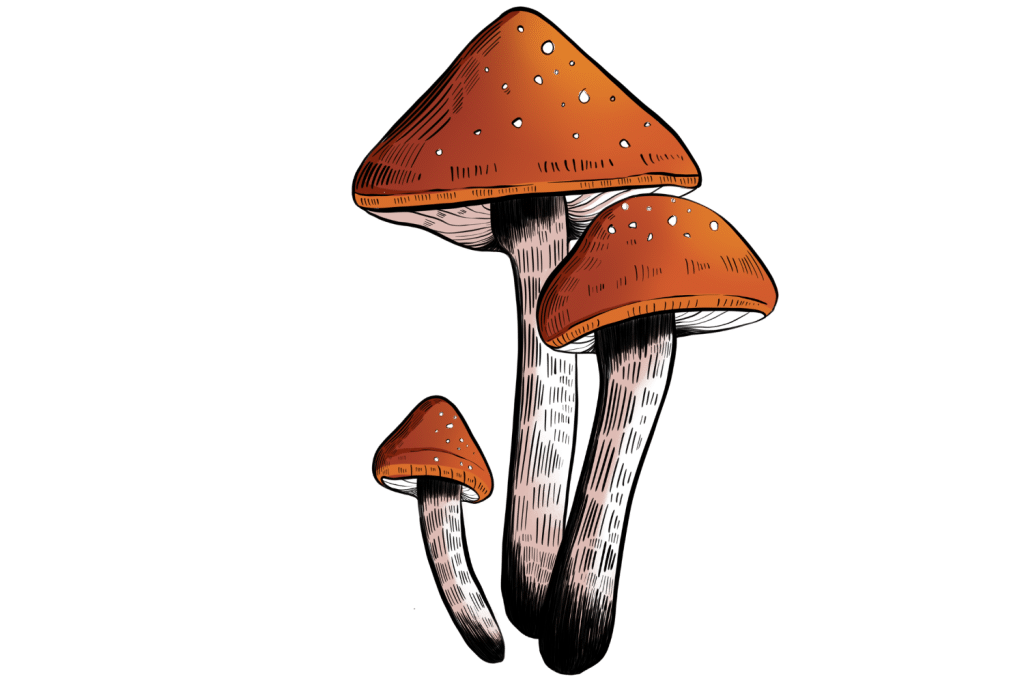
In the United States of America, psilocybin remains a schedule 1 substance on a federal level. This puts magic mushrooms in the same class as LSD, heroin, and MDMA. It’s also illegal in most states, but a few have adjusted legislation surrounding the substance.
Colorado, Oregon, and Massachusetts have decriminalized psilocybin. There are also certain areas in California where people are free to use magic mushrooms legally under local law. Slowly but surely, more states in the US are relaxing their laws.
Summary: A Highly Potent Psilocybe Species
Overall, this species is an intriguing one. Little is known about its history, but it’s one of the most potent psilocybin-containing mushroom species in the world. It can be hard to find and tricky to grow, but a single shroom can send you to another dimension.
This species has an extremely small natural dispersion and only grows in a few states in North America. Its habitat is close to coastal waters, and it loves wood. Unfortunately, it’s difficult to cultivate indoors due to the challenges associated with creating an optimum growing environment, but it’s possible to get shrooms for years if you do it outside.
These are not for beginners and should be treated with respect.
References
- Gartz, Jochen. (1996). Observations on the Psilocybe cyanescens complex of Europe and North America. Ann. Mus. Civ. Rovereto, 12, 209-218.

